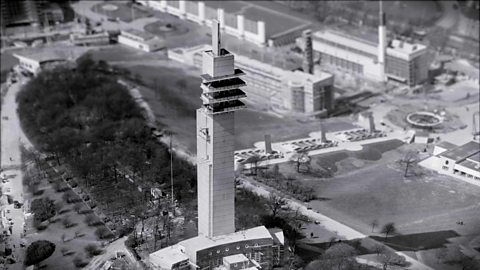Why ScotlandвҖҷs first skyscraper вҖ“ built for the 1938 Empire Exhibition вҖ“ was (unexpectedly?) demolished just one year later

It was Scotland’s tallest building.
Built in 1938, the art deco Tower of Empire – also known as Tait Tower after its architect Thomas S. Tait – stood 300ft tall and could be seen from 100 miles away.
It boasted three observation decks, from which visitors to the Empire Exhibition in Glasgow could look out across 170 acres of remarkable new architecture.

ScotlandвҖҷs first ever Skyscraper
GlasgowвҖҷs Empire Exhibition included a tower that provided incredible views.
But just one year after its construction, the exhibition centrepiece was demolished.
Local legend has it that the groundbreaking landmark was originally intended as a permanent monument, but was removed to avoid becoming a bombing target for enemy planes in the forthcoming Second World War.
This legend has, however, since been debunked: the tower was always intended to be temporary.

Empire Exhibition, Scotland 1938
Glasgow’s Bellahouston Park was transformed in 1938 to show off new architecture and boost Scotland’s post-depression economy.

Between May and December, the exhibition – opened by King George VI – attracted 12 million visitors and even played host to an international football tournament.
Once the exhibition ended, all but one of its buildings were demolished.
The Palace of Art still stands to this day but is now used as a multipurpose leisure centre.
An aerial view of the exhibition

- (2472 x 1392)
The exhibition in video
Building, maintaining and demolishing skyscrapers
Latest features from ҙуПуҙ«ГҪ Scotland
-
![]()
'Wild swimming helps me process the grief of losing my son'
The benefits of cold water therapy.
-
![]()
Winter adventures are appealing, but an expert advises caution
Trips in winter require particular knowledge and skills.
-
![]()
The rescuers: Why volunteers risk their lives in mountain emergencies
Landward meets members of the Cairngorm Mountain Rescue Team.
-
![]()
вҖҳLook for the lightвҖҷ вҖ“ practical tips to help you through another winter with SAD
Useful advice and tips to combat low moods at this time of year.
-
![]()
How you could be a binge drinker without even knowing
Binge drinking is classed as fewer units than many people may realise.
-
![]()
How chocolate biscuits and drama classes helped one man leave prison behind
The healing power of creativity.
-
![]()
'When people believe in you, itвҖҷs life-changing'
Author Graeme Armstrong revisits the man who helped turn his life around.
-
![]()
The 'breath-taking' display of US birds swept on to British soil
Recent storms have brought rare birds to our shores.
-
![]()
Six things we learned about Alan Cumming on Take the Floor (Spoiler: includes accordions)
The actor spoke to Take the Floor's Gary Innes.
-
![]()
How street gangs trap young men in a dangerous cycle of violence
The almost inescapable pull of life in a gang.
-
![]()
Why stylist Gok Wan believes there's no such thing as bad fashion
The fashion expert says we should stop following rules and do what feels right.
-
![]()
Is sending a CV still the right way to apply for a job?
They've been central to job applications for years, but are they worth it?



















